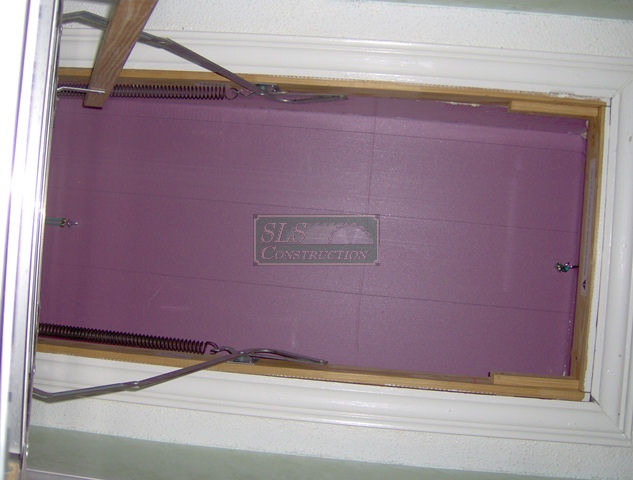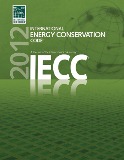 If you have been in the building industry any length of time, you know how confusing things can get with manufacturers stating you need to do X, which might be opposite of what the codes state, or figuring out which code applies. Recently, I got the following note regarding our article on attic hatches:
If you have been in the building industry any length of time, you know how confusing things can get with manufacturers stating you need to do X, which might be opposite of what the codes state, or figuring out which code applies. Recently, I got the following note regarding our article on attic hatches:
Corning states per UBC the 2″ foam board requires a 15-min fire barrier rating (e.g., 1/2″ drywall) be applied to exposed foam board surfaces; does this code not apply to foam board exposed in attic?
In this case the manufacturer is actually calling out a code section. While it is nice that they did this, the issue is that the UBC has been replaced in many area’s by the “I Codes” & does not really apply to homes. Granted many of the codes out there do require “exposed” foam to be protected (unless it meets certain tests) the questionnaire above has hit on an item I like to call a gray area.
I share the following in almost every presentation I do:
|
The Gray Area’s:
In this case one has to wonder – what does exposed mean. For most it simply means being exposed to the living space, which in this case the attic door cover handles just fine. Ahh but what about in the attic – well I have known a few inspectors that will claim that needs to be covered also as that is how they read the code book. Many others will look at the space & say that as long as it isn’t used as livable space, for storage, &/or no mechanical equipment is located there, it isn’t required. The moral of this, always check with the AHJ if there is any doubt.
 I know I mentioned above that the AHJ has the final say, but what happens when you know they are just flat out wrong, or there is a better way? The first thing to ask is does it really matter? As the saying goes, in many cases it is better to pick your battles wisely. The second is to remember that it is hardly personal & if you turn it that way, you might not like the current or long lasting results. Some quick tips or ways to approach an item: I know I mentioned above that the AHJ has the final say, but what happens when you know they are just flat out wrong, or there is a better way? The first thing to ask is does it really matter? As the saying goes, in many cases it is better to pick your battles wisely. The second is to remember that it is hardly personal & if you turn it that way, you might not like the current or long lasting results. Some quick tips or ways to approach an item:
|
Which Code Applies:
 One of the best things to happen in many peoples eyes is with the required adoption of the energy codes, many states are adopting a statewide building code. Part of this means that many builders & remodelers don’t have to try to remember 3 or 4 different versions. With that said, in many locales there are “regional” issues that can occasionally pop up – for instance high fire areas, wind conditions & the local AHJ has the right & ability to interrupt, change, or adopt new provisions. This has led me on a few times to answer a question with, you need to contact your local building inspector as they may have a different code than what is actually printed.
One of the best things to happen in many peoples eyes is with the required adoption of the energy codes, many states are adopting a statewide building code. Part of this means that many builders & remodelers don’t have to try to remember 3 or 4 different versions. With that said, in many locales there are “regional” issues that can occasionally pop up – for instance high fire areas, wind conditions & the local AHJ has the right & ability to interrupt, change, or adopt new provisions. This has led me on a few times to answer a question with, you need to contact your local building inspector as they may have a different code than what is actually printed.
 One trick I used to use was I essentially stayed up & only built to (ok better) than the recent code. With that there have been & probably always will be parts of the code that are debatable – for example the lateral hold down connectors. If I knew a city was on an older code I didn’t worry about having to deal with them or addressing this issue with an inspector. One trick I used to use was I essentially stayed up & only built to (ok better) than the recent code. With that there have been & probably always will be parts of the code that are debatable – for example the lateral hold down connectors. If I knew a city was on an older code I didn’t worry about having to deal with them or addressing this issue with an inspector. |
Installation / Manufacturer Instructions:
One of the biggest issues with the older codes is that they were written before we had all these nice new specialty connectors, new methods & materials to use, and our knowledge of Building Science was a little more limited (can anyone say plastic in the walls). This has led to a dramatic shift over the last few code cycles to have either or statements written into the codes (either install per codes or per manufacturers directions) or just a straight – “install per manufacturers guidelines.”
Ahh but why the big shift – well there are actually two big reasons for the shift & the first one has to do with the issue above and not holding back a new technology because it wasn’t allowed per codes or even envisioned. The second has to do with trying to write a code that could cover all the bases – it simply can’t happen. To add to that, as many of these “manufacturer callouts” have to undergo testing (UL, ICC, etc…) to be approved for use it only makes sense to install them per the way they were tested & approved.
 Do Not forget to save the manufacturers directions as you are required by code to be able to provide them to the inspector on request. Along those lines by saving the directions, you can provide them to the homeowner as part of a homeowners guide book which is not only required by many programs, but just a good idea in general. Do Not forget to save the manufacturers directions as you are required by code to be able to provide them to the inspector on request. Along those lines by saving the directions, you can provide them to the homeowner as part of a homeowners guide book which is not only required by many programs, but just a good idea in general. |
